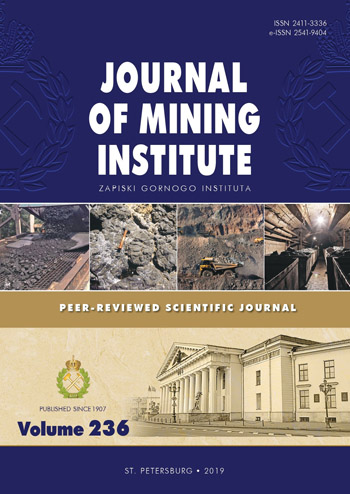Features of elementary burst formation during cutting coals and isotropic materials with reference cutting tool of mining machines
- 1 — Ph.D., Dr.Sci. Professor Saint-Petersburg Mining University
- 2 — Ph.D. Associate professor Saint-Petersburg Mining University
- 3 — Postgraduate student Saint-Petersburg Mining University
Abstract
The paper considers the cutting of brittle coals and rocks by a single cutter of a mining machine, in contrast to the generally accepted integral approach, different from the standpoint of the formation of successive elementary bursts that make up the cut. The process of the formation of an elementary bust in time is viewed as successive phases. Due to the complexity and multi-factor nature of the process, preference is given to experimental bench studies using reference cutters, isotropic materials, and real rock blocks. The bursting parameters values greatly influence the time of static forces action, the peculiarities of the formation of stress fields in the undercutter zone of the rock mass and the conditions for the emergence and development of main cracks in the near-cut zones during the cutting process. The accepted phase-energy method of analyzing the process, which most closely matches the structure of the studied process, revealed a more significant, than previously expected, effect on the cutting process, variability of cutting speed and potential energy reserve in the cutter drive. The paper discusses the possibility of purposeful formation of the parameters of elementary bursts. It describes new ways to improve the efficiency of cutting coal and rocks, in particular, reducing the maximum loads and specific energy consumption. It also considers the possibility of reducing the grinding of the rock mass and dust formation.
